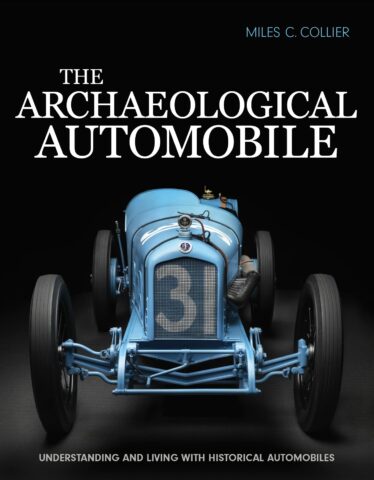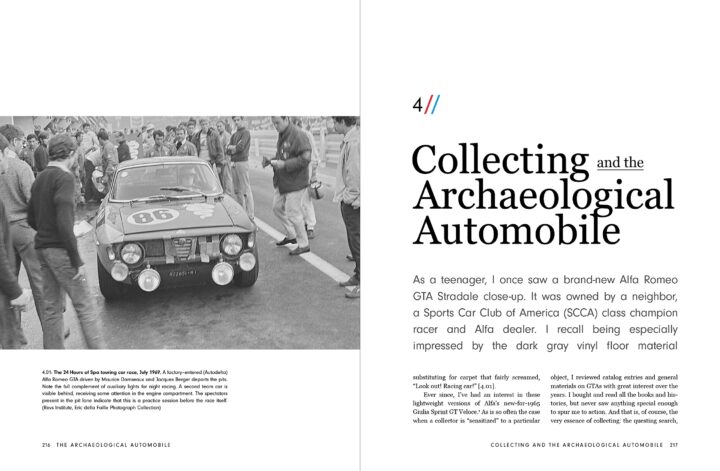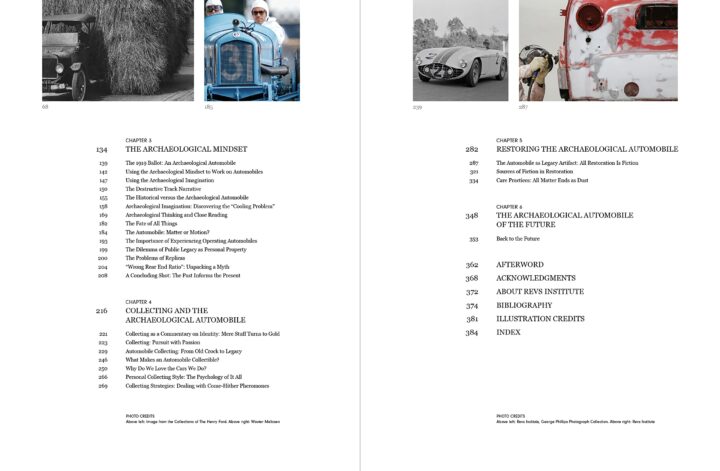by Miles C. Collier: published by Collier AutoMedia, Naples FL USA: 2022
Book review by Hugh King
How can we preserve humanity’s treasure trove of automotive knowledge for generations to come?
This is the first book by Miles Collier, the renowned founder of the Revs Institute in Naples, Florida www.revsinstitute.org and it is a massive, beautiful work of art. It is a seminal work, in the sense that Collier inspires us telling how and why he has conceived, formed then stocked the Revs Institute so that is now “one of the greatest repositories of automobile resources in the world”.

Until getting into this tome – at about page 134 of the 380 in this first, limited edition – I had not realised that I needed to understand the founder’s philosophy and see his ‘North Star’. But now I know something of the man and his philanthropy and I say this is a legacy work, carefully structured and well written, confident and strewn with good ideas and guideposts for custodians of all things automobile.
Collier inherited substantial wealth founded on land development in South-West Florida, then multiplied it with further dealings in real estate. His father and an uncle ‘are credited with introducing sports car racing to the United States during the 1930s’ and Miles participated in the sport from an early age. He founded the Revs Institute (a non-profit organisation specialising in automotive history, research and educational programs) in 2008. The Institute’s tag-line is “Preserving the Future of the Past” — a mission statement that is familiar to Volunteers and supporters of our Australian Motor Heritage Foundation!
There is a ‘living museum’ of more than one hundred cars, many sourced from the liquidation of the Briggs Cunningham collections, and the archive of research material (more than 24,000 books and 200,000 magazines for starters) includes the library resources acquired from Karl Ludvigsen in 2011. The digitisation process is extensive and our own program is modelled on it to the extent possible.
Miles Collier trained as an artist, and this large book reflects his views on what he names ‘the archeological mindset to work on automobiles’… hence the title of his book. As he says,
archeologists do not work on the past, they work on what remains of the past in the present…. Archeological thinking gives us a powerful way to think about humans and artifacts from any era, including the near past … or even the present
Developing the theme he says ‘the value of an archeology of the present lies not, simply, in the documentation of things … In fact, as we are discovering, archeology provides us access to hitherto unsuspected narratives, and archeological narrative is antecedent to history’.
With a strong set of arguments like these in favour of patient, often slow study and the proper use of all relevant literary resources, Collier demonstrates why he has brought such focus and energy to his collecting and curation of the vast library resource that he has acquired for the Institute.
His descriptions then of the restorations of a 1919 racing Ballot chassis number 1003 which was Rene Thomas’ mount in the 1919 Indianapolis 500 race, the Ford GT40 Mk 2b driven at the Daytona 24 Hours race 1966 by Mark Donohue and Walt Hangsen, and others in his collection all go to the same point.

Using the ‘archeological imagination’ and ‘close reading (which is) the patient process of in-depth examination that gradually uncovers layers of data’ the researcher is using the ‘primary tool’ of the archeological imagination. Central to all the activity is the presence of a large reliable library resource made accessible by digitisation.
There are long discussions on topics related to the theme of archeological methods and the needed ‘mindset’ and these add so much to the overall work. The chapter headings give a strong sense of Collier’s interest and skills. The chapter on collecting technique has a sub-head “Mere Stuff Turns to Gold”. A long section on discerning collecting of automobiles is headed “From Old Crock to Legacy”. Another is headed “Why do we Love the Cars we do?” and in it he tells of the purity and simplicity of some (very few) mass produced cars, including his Alfa Romeo Giuletta Sprint Veloce, a favourite.

The final and very long chapters are under the heading “Restoring the Archeological Automobile”. The first words grabbed my attention … “As part of my archeologically focussed, continuing care and conservation program, I decided to repaint the tilt-front nose of my 1967 Alfa Romeo GTZ racing car and, here’s where it got tricky, still preserve the forty years of accumulated sandblasting and chipping there”. The ensuing narrative was for me a page-turner, and so it went with his many other “jobs”.
Collier writes in the first person, and his opinions are carefully stated, he has been under no pressure to generate his book and there is a sense of calm conversation throughout. A delight to read, and then read again.
Review by Hugh King for AMHF: 25 July 2022

